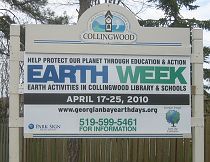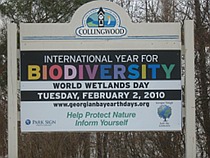Young people go to the courts to protect their future
– Martin Luther King Jr.
“We are caught in an inescapable network of mutuality, tied in a single garment of destiny. Whatever affects one directly, affects all indirectly.”
Martin Luther King Jr. wrote those words in 1963 while he was in jail in Birmingham, Alabama for instigating a coordinated campaign of protest against desegregation. Was he referring only to humans, or did he acknowledge the ecological web of being too? It wouldn’t surprise me if he had had the extraordinary prescience to point out to us the interconnectivity of all life and not just focus on human relationships, as the ecology movement was about to get started with the publication of Rachel Carson’s book Silent Spring. And I have no doubt that if King were living today he would say that those same inexplicable but vital pulses of mutuality across Nature are being increasingly frayed.
On April 22nd, millions of people celebrated Earth Day. The UN calls it “Mother Earth Day,” and it was celebrated within the UN Decade on Ecosystem Restoration, which resolves “to prevent, halt and reverse the degradation of ecosystems on every continent and in every ocean. It can help to end poverty, combat climate change and prevent a mass extinction.” [www.decadeonrestoration.org/] This resolution partners with the Convention on Biological Diversity, whose recent summit in Montreal I reported on last December. However, the resolution speaks to all of us, and calls out to each of us to do our part.
In the past I have celebrated Earth Day by attending Earth-themed concerts and protests and by propagating seeds; this year it was sweet peas. I also read the World Meteorological Organization (WMO) report, State of the Global Climate 2022 [tinyurl.com/WMO-climate-indicators], published on April 21st this year. One of its key messages is: “The years 2015 to 2022 were the eight warmest in the 173-year instrumental record. The year 2022 was the fifth or sixth warmest year on record, despite ongoing La Niña conditions.” As the three main greenhouse gases—carbon dioxide, methane and nitrous oxide—rise to new levels, so temperatures increase, along with intensified flooding and droughts, rising sea levels and the loss of glacial ice. The report looks in depth at global climate indicators and key drivers of climate breakdown.
There is no dearth of peer-reviewed reports on the biodiversity/climate crisis. The WMO report amplifies with frightening graphics what we already know will come: a “death sentence,” as the Secretary-General of the UN bluntly calls it, is rapidly approaching and will be upon us unless all people give immediate attention to the crises. This report is aided by an interactive and simplified overview version, which I highly recommend: tinyurl.com/WMO-stories
These accelerating ecosystem disasters in the last two decades have caused young people to launch many legal challenges around the world to force governments to move on the climate crisis. Young people in Canada, Norway, US states—Hawaii and Washington—Pakistan, Peru, Portugal and the Netherlands have brought cogent arguments to the courts. The urgency for young people lies in the universal truth that climate chaos will upend their lives.
Young people in Québec and Ontario have individually gone to court claiming that their charter rights are being violated. Last week Justice Marie-Andrée Vermette, who presided over the case in Ontario said young people “make a compelling case that climate change and the existential threat that it poses to human life present special circumstances that could justify the imposition of positive obligations under section 7 of the Charter [of Rights and Freedoms],” which guarantees the right to life, liberty and security. Despite acknowledging that young people and Indigenous groups would bear the brunt of Ontario’s lack of commitment to uphold its pledge to act on the 2015 Paris climate agreement, she was skeptical that weaknesses in Ontario’s climate plan violated section 7 of the Charter.
Vermette also dismissed the idea that Ontario’s plan violated section 15 of the charter, which recognizes the right to equality under the law without discrimination. A similar dismissal took place in Québec, where the courts rejected young people’s fight for climate mitigation by refusing to accept that the Québec government has a direct obligation to protect its citizens from climate chaos. The Québec organization Environnement Jeunesse (ENJEU) announced in 2018 that it was taking the Canadian government to court for failing to protect young people from global warming. The court documents begin with the question, “What is the purpose of a government if not to protect the lives and safety of its citizens?” This class action lawsuit was also dismissed.
An inspiring article in the Guardian interviewed young people from around the world who decided to fight for their right to have a future [tinyurl.com/young-people-court]. Some courts are beginning to listen to young people’s climate arguments. I have followed for years the ups and downs of the US-based Our Children’s Trust, which has forged ahead to defend the claim that young people and future generations have inviolable rights that include climate stability. So far only the Netherlands Supreme Court has ruled in favour of demanding climate action by its government. tinyurl.com/netherlands-court
Many people cannot but ask why it is that young people need to confront their elected governments by reluctantly taking up the protracted and exhausting fight in the courts to counter the self-imposed inertia of democratically elected governments. Why is it that there have now been 27 UN climate conferences, and yet it is still taboo to even mention having a reduction in fossil fuel production on record at those conferences? Typically, young people are pushed aside at these world summits. As a result, they feel that they have no choice but to go to the place of last resort—the courts—to voice their despair and overturn these flagrant injustices.
It should be noted here that there have been no court appearances by young people in authoritarian countries, as the courts there are “owned” by those same regimes. But are not western courts similarly “owned” by corporate power? As democratically elected states increasingly fall or are made into one-party states as is the case in Hungary, perhaps we need to say that we are potentially next. Governments that are only beholden to their corporations and not their constituents become plutocracies. As the world rides on the cutting edge of so many crises, those who unfailingly believe that democracy is being threatened must come to the aid of young people to reinforce our protection of Nature—and humanity.

